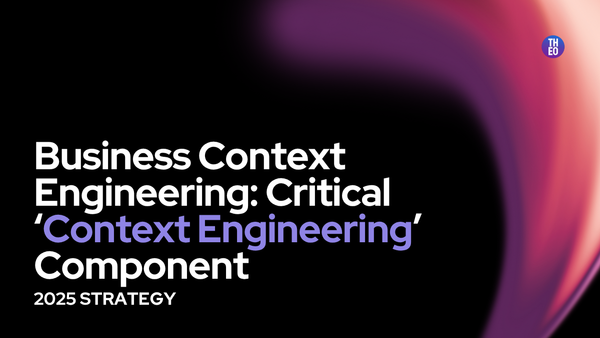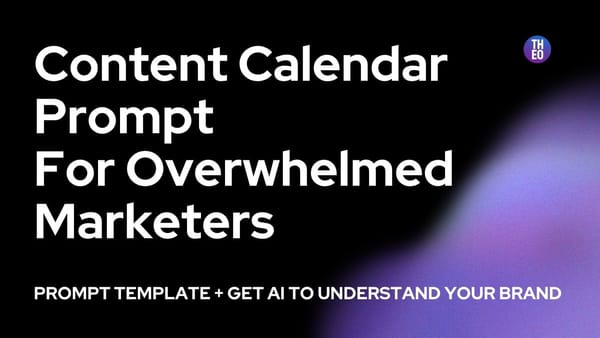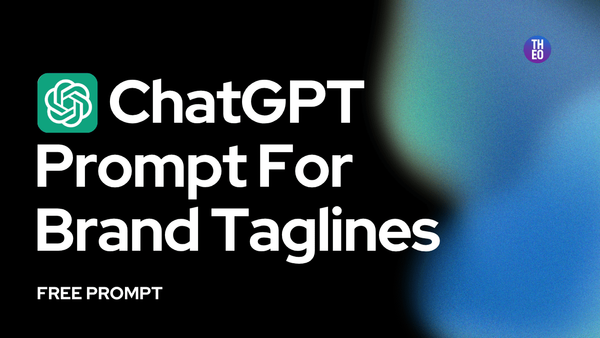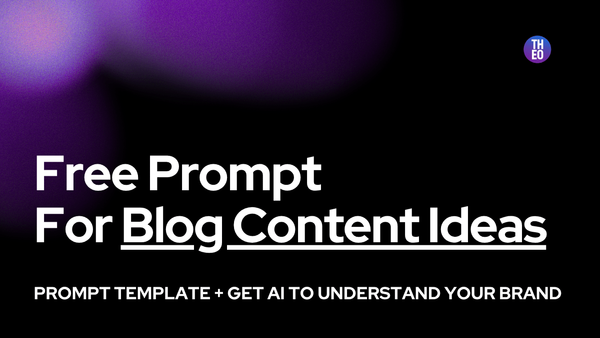Context Engineering: Why Your AI Gives Bad Results
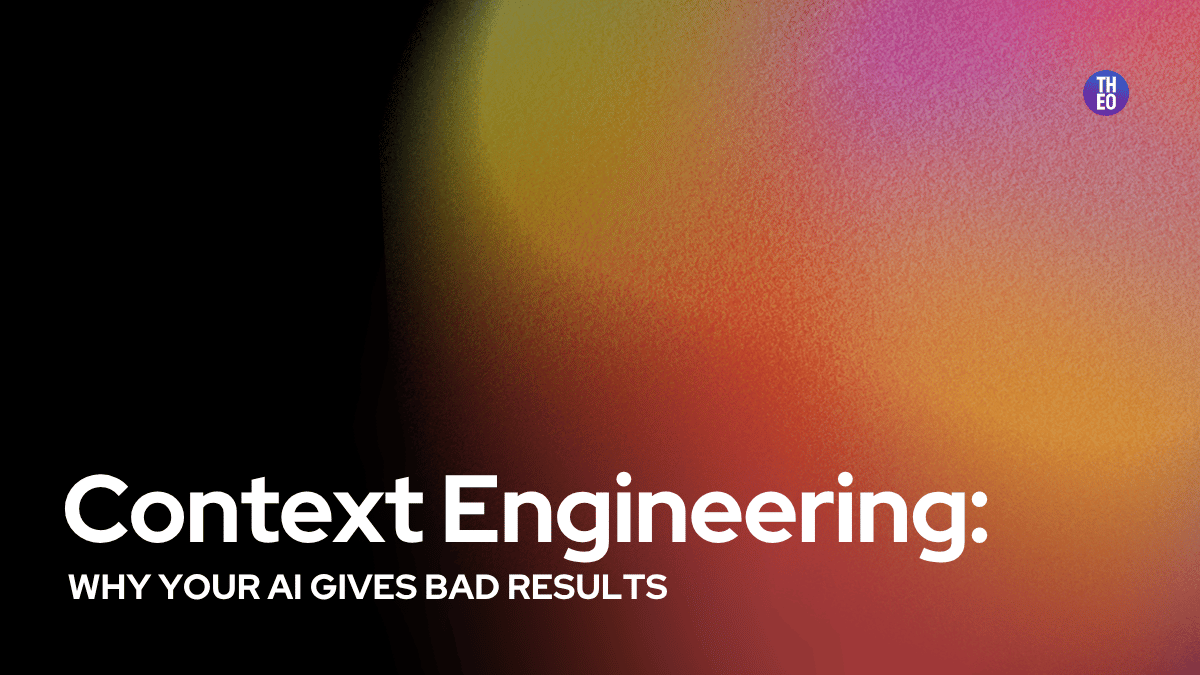
You've probably experienced this frustration: you ask ChatGPT to help with your business, and it gives you generic advice that could work for any company. Or maybe you spend 20 minutes explaining your business context, only to get responses that still miss the mark.
If this sounds familiar, you're not alone. Most people think the solution is better "prompts" - the instructions you give to AI. But there's something bigger happening in the AI world that's changing everything.
It's called context engineering, and it's the reason some businesses are getting amazing results from AI while others are stuck with robotic, unhelpful responses.
What Is Context Engineering? (Simple Explanation)
Context engineering is simply organizing all the information about your business so AI can understand it properly. Instead of explaining your company over and over again, you set it up once so AI "gets" your business from the start.
Think of it like this:
- Old way: Explaining your business to AI every single conversation
- New way: Teaching AI about your business once, then having smart conversations
The term "context engineering" started trending in 2025 when tech leaders realized that how you organize information for AI matters way more than how you phrase your requests.
Why Context Engineering Matters More Than Perfect Prompts
Here's what most people get wrong about AI: they think the secret is writing better prompts. But prompt engineering (writing clever instructions) only gets you so far.
The Reality:
- A simple request with great context beats a perfect prompt with poor context every time
- AI models are already incredibly smart - they just need to understand your specific situation
- Most AI failures happen because the AI doesn't have enough information about your business
Research from the Federal Reserve shows that people who organize their business information properly for AI tools save 6+ hours weekly compared to those just trying to write better prompts.
The Problem: Why Your AI Doesn't "Get" Your Business
Generic AI Responses Happen Because:
- Missing Business Details: AI doesn't know what makes your company unique
- No Customer Context: It doesn't understand who you serve or their problems
- Brand Voice Confusion: It can't match your communication style
- Competitive Blind Spots: It doesn't know how you're different from competitors
The Result:
- Content that could be for any business
- Advice that doesn't fit your situation
- Constant need to re-explain everything
- Frustration that leads to giving up on AI
How Context Engineering Solves This
Instead of hoping AI will figure out your business through conversation, context engineering gives it a complete picture upfront.
The Four Key Areas Your AI Needs to Understand
1. Your Business Basics
- What you do (specifically, not generically)
- What makes you different from competitors
- Your main goals and priorities
- How your business actually works
2. Your Customers
- Who they are (age, job, company size, location)
- What problems they face every day
- How they like to communicate
- What success looks like for them
3. Your Communication Style
- How formal or casual you are
- Industry terms you use (and ones you avoid)
- Your personality as a brand
- Examples of how you actually talk
4. Your Market Position
- Who you compete with
- Why customers choose you
- What category you're in
- Current industry trends affecting you
Real Example: The Difference Context Makes
Without Context: "Write a product announcement email."
AI Response: "We're excited to announce our latest product offering that delivers exceptional value and innovative solutions..."
With Context (simplified example): "Business: B2B marketing analytics platform for overwhelmed marketing managers at growing companies who spend hours creating reports manually. Customer: Marketing managers wearing multiple hats, frustrated by lack of clear ROI data. Voice: Direct, empathetic, solution-focused. We understand the chaos of small team marketing. Product: New automated report builder connecting 12+ marketing tools."
AI Response: "Tired of spending your weekends building marketing reports? Our new automated report builder connects all your marketing tools and creates executive-ready dashboards in 30 seconds. Finally, you can show your impact without the spreadsheet nightmares."
Same AI. Completely different results. That's the power of context.
The Business Impact: What Changes When AI Understands You
Immediate Improvements:
- AI responses sound like they came from someone who knows your business
- Much less time explaining context in every conversation
- Content that matches your brand voice consistently
- Advice that actually fits your specific situation
Longer-Term Benefits:
- Team members can use AI effectively without extensive training
- Advanced AI applications become possible
- Competitive advantage through better AI utilization
- Strategic insights instead of generic advice
Studies show that better context doesn't just improve individual interactions - it unlocks entirely new capabilities, with some organizations seeing 40% faster task completion and 18% better output quality.
Common Context Engineering Mistakes to Avoid
1. Information Overload Don't dump everything at once. Start with key information and add details gradually.
2. One-Time Setup Your context needs regular updates as your business changes and grows.
3. Generic Descriptions "Professional but friendly" doesn't help. Be specific about your actual communication style.
4. Ignoring Context Quality Test your context regularly. If AI responses aren't improving, refine your information.
The Future of Context Engineering
Context engineering is becoming the standard way successful businesses work with AI. As AI tools get more powerful, the quality of your business context becomes the main factor determining your results.
What's Coming:
- AI tools with better context management features
- Industry standards for organizing business information
- More sophisticated context organization methods
- Context sharing across different AI platforms
Why This Matters Now: Companies mastering context engineering today will have a significant advantage as AI becomes more central to business operations.
Making Context Engineering Work for Your Business
The difference between businesses getting amazing AI results and those getting frustrated comes down to context quality. It's not about having the most advanced AI tools or writing perfect prompts - it's about organizing your business information so AI can truly understand what makes you unique.
Here's the thing about context engineering - it works exponentially better when you have your business context properly organized from the start. That's where systematic business context structuring comes in. Instead of manually piecing together context for each AI conversation, imagine having all your business intelligence organized once, then instantly available to make any AI assistant understand your positioning, customers, and goals.
When your business information is systematically structured rather than scattered across different documents and conversations, every context engineering technique becomes effortless instead of time-consuming. The investment in proper organization pays dividends every time you interact with AI tools.
💡 Wait, what if you could set-up an AI that writes in your brand voice in just a 2-minutes? What if it would save you 12+ hours weekly on repetitive marketing tasks?
See how → or get weekly AI marketing tips that actually work for marketing teams.


